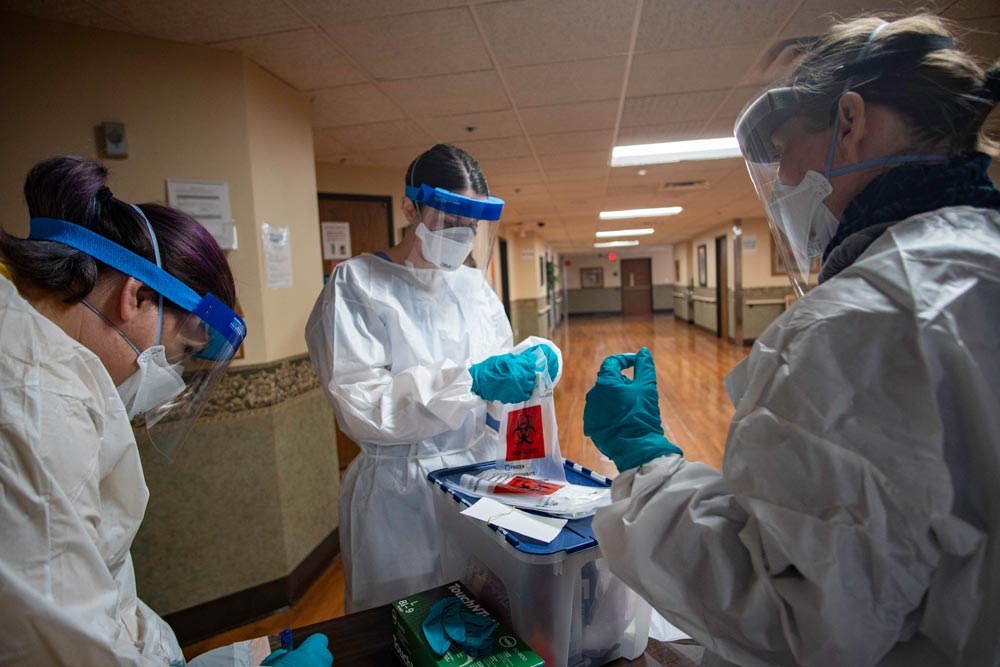Recommendations for Fully Vaccinated People
COVID-19 Homepage
A Marathoner’s Take on COVID-19
Guillermo “Memo” Sanchez is both a marathoner and a disease detective.
Memo is a part of the Epidemic Intelligence Service (EIS), whose officers serve on the front lines of public health to investigate disease outbreaks and rapidly put control measures into place. He is normally assigned to the Alabama Department of Public Health, and when the COVID-19 pandemic emerged, he helped trace and monitor those in close contact with people who were infected with COVID-19. He also trained others in Alabama to do the same.
However, when COVID-19 cases surged in the Detroit area in April, Memo was called to assist efforts to prevent COVID-19 from spreading in nursing homes. Before joining the EIS, he worked as an emergency medicine physician assistant at a trauma center in one of Atlanta’s major hospitals, an experience which has made him familiar with infection prevention and control in healthcare settings.
Nursing home residents are at higher risk for severe illness and death from COVID-19. These residents often live together in the same room, are more likely to have chronic health conditions, and use supportive medical services like dialysis more frequently—all factors that can raise the chances of COVID-19 spreading.
The Detroit Health Department (DHD) rapidly increased its local COVID-19 testing capacity and tested every nursing home resident in the city by the end of April. Memo was part of a CDC Field Support Team that worked alongside DHD leaders, local experts in infection prevention, and local healthcare system partners to develop strategies to combat nursing home outbreaks. Repeated test results were used to guide preventive measures to reduce ongoing transmission.
“We built on ongoing efforts to provide infection prevention guidance to nursing home leaders, including information on how to use data to save lives. Facility leaders had to decide where they were going to move residents based on COVID-19 test results,” Memo says. “For example, we would ask, ‘Are you able to place all the people infected with COVID-19 on one floor or one unit, and can you assign designated healthcare providers to work only on those units?’ These were important questions and logistical challenges that each facility had to face.”
Following CDC guidance, one facility transferred residents who tested positive to a nursing home that was owned and operated by the same company and was designated to care only for residents with COVID-19. But when the facility learned that residents were still becoming infected even after those with known COVID-19 infections were transferred, they had to develop a new plan. Eventually, the facility set up a COVID-19 care unit on a separate floor, which allowed residents to remain in a familiar location under care of staff who knew them.
At another facility, one nursing director had endured multiple hardships. Her mother died in March due to suspected COVID-19, she lost several of her residents with whom she had built long-term friendships, and she had also survived the disease herself. Through all of this, once she was able to safely return, she continued to work.
“It was heartbreaking and inspiring at the same time,” Memo says. “Despite losing her mother, despite losing some of her beloved friends, she was back at work and 100% dedicated to protecting her residents.”
The experience was a reminder “that for every data point, there is a human story. And for every story, there are many unsung heroes that we never hear about. I saw scores of volunteers who were EMTs, nurses, firefighters, and many other professions that were putting their health at risk to protect the most vulnerable of people living in Detroit.”
Dedication is a common trait among many of the people who are working to respond to this pandemic, and it can be seen in their personal lives as well. A native of Nevada, Memo started long-distance running while attending college at the University of Nevada, Reno.
“I trained for my first marathon with my dad and because it was such a positive experience, I was hooked. It’s the one exercise that you can do any time of year, with people or without, and for me, it has really helped me cope with the stress, anxiety, and tragedy of this pandemic.”
The campaign against COVID-19 “is itself a marathon—over 26 miles long, and we’re barely at the 10-mile marker,” Memo says. “We have a long way to go, and we have to find what is going to get us to the finish line.”

